
48 minute read
The Gulf's Future Outlook: A Closer Look at the Role of Hospitality and Tourism
The Gulf countries have implemented clear strategies to diversify their economies, acknowledging that hydrocarbons will eventually become depleted and alternative sources of sustainable economic growth must be sought. The tourism and hospitality industry is among the key growth drivers that governments are promoting as a crucial economic diversification strategy, creating employment opportunities and significantly contributing to their GDP. By establishing appropriate procedures and legislation, robust regulatory frameworks will facilitate the industry’s effective implementation and attract substantial investments, bolstering the Gulf countries’ prominence on the global tourism landscape.
Already, the efforts to enhance the tourism sector are producing positive outcomes. In 2022, the UAE’s tourism industry contributed 11.9 percent to the country’s GDP, with Dubai hosting 14.3 million visitors, a 97 percent increase from 2021. In comparison, Saudi Arabia’s tourism sector contribution increased to 4 percent by the end of 2022, compared to approximately 3 percent in 2019. The Kingdom aims to elevate the industry’s GDP contribution to 10 percent by 2030.
Advertisement
Across the region, projects are emerging to promote previously undiscovered heritage tourism sites, as part of efforts to stimulate the sector’s growth. Saudi Arabia, for instance, is directing its focus toward promoting its spectacular archaeological discoveries, while the UAE offers several opportunities to explore museums that showcase its rich history and archaeological treasures.
The Gulf states are making significant strides in their pursuit of economic diversification, with Qatar drawing global attention by hosting the 2022 FIFA World Cup and poised to welcome visitors from around the world. Bahrain aims to attract 14.1 million tourists by 2026, while Oman and Kuwait have also initiated extensive redevelopment plans in this sector.
Governments in the region have invested in their tourism infrastructure, featuring luxurious hotels, mountain resorts, desert landscapes, recreational parks, and serene beaches. They are also implementing various policies to strengthen their tourism sectors, such as hosting major global events. With warm hospitality and exceptional services, the region is poised to become a top tourist destination. It is, therefore, not surprising that several GCC cities, including Dubai, rank high in global rankings as some of the best destinations for international travelers.
Chief Executive Officer – Publisher
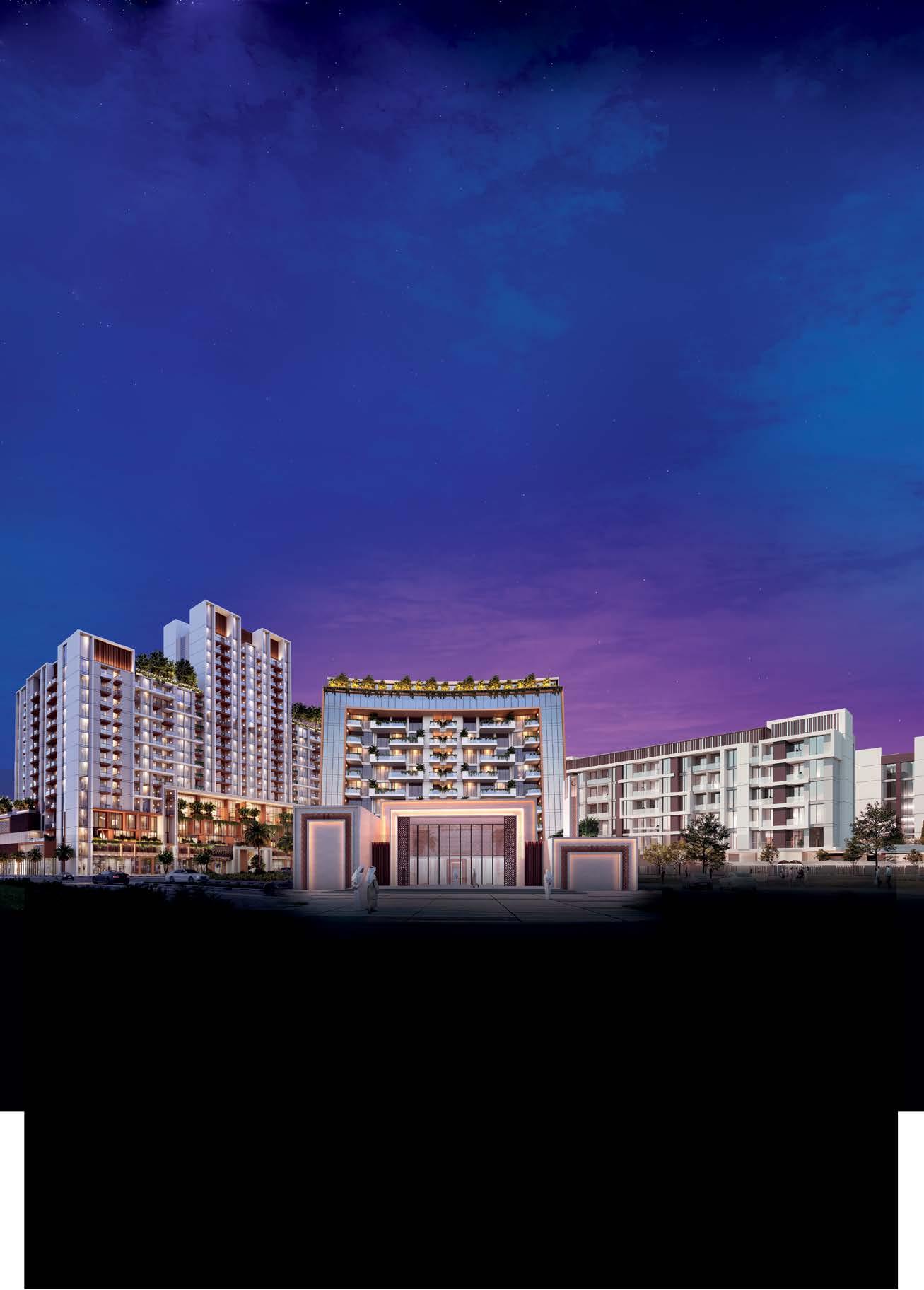

Dubai super-prime residential market sees $14B transactions in Q1
Prices increase by 27.49 percent from previous quarter
According to an analysis of data from the Dubai Land Department by Luxhabitat Sotheby’s International Realty, Dubai’s super-prime residential market witnessed transactions worth AED14 billion in Q1 2023, reflecting a volume reduction of 21.72 percent quarter-on-quarter over Q4 2022. The super prime luxury market in Q1 2023 currently represents 21.7 percent of the overall Dubai residential market in Q1 2023 in terms of volume.
The average price of the super prime property is growing by 27.49 percent QoQ, with an average price of AED25.2 million with 1,811 units sold.
The other super prime areas that continued to see positive volume sales growth QoQ were Al Barari (167.53 percent at
AED926 million), Downtown Dubai (48.78 percent at AED3.4 billion), and Emirates Hills (83.35 percent at AED613.6 million). With AED5.7 billion in super-prime sales, the Palm Jumeirah has seen an increased average in price by 17.26 percent QoQ to AED9.5 million.

Jumeira Bay had the highest average price at AED10,594 per sq. ft. and an average property price of AED93.3 million dirhams, despite only 22 units being sold in Q1 2023. In the super prime market, 1,584 apartments were sold, totaling AED9.8 billion, which represents 66 percent of the overall prime market volume. Additionally, 294 villas sold for AED5.6 billion in the super-prime market.
New Saudi economic zones offer attractive benefits for investors
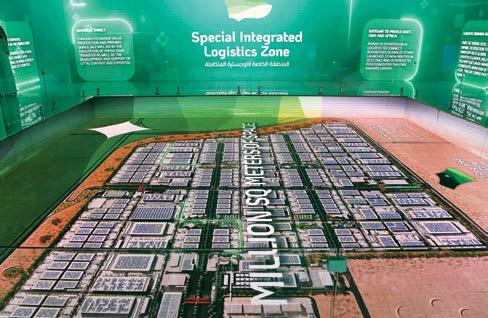
SEZs create hubs for businesses across key growth sectors
The announcement of new economic zones located in Riyadh, Jazan, Ras al-Khair, and King Abdullah Economic City north of Jeddah supports Saudi Crown Prince Mohammed bin Salman’s commitment to strengthening Saudi Arabia’s global investment destination. In a statement by SPA, the Crown Prince said: “Saudi Arabia is open for business, and welcomes investors from all around the world to see first-hand the historic opportunities we have to offer. The new Special Economic Zones, launched today, will significantly impact how business is done in the country, create tens of thousands of jobs, and contribute billions of riyals to our GDP.”
The SEZs take advantage of Saudi Arabia’s strategic location at the heart of global trade, providing new hubs for businesses in key growth sectors to launch and scale companies and technologies that will shape the future. The SEZs will support national strategies and international frameworks, enhancing key sectors such as logistics, manufacturing, and technology.
Companies in the SEZs will enjoy benefits such as competitive tax rates, customs duty exemption, foreign ownership, and the attraction of top talent.
The new SEZs will boost the local economy, jobs, and supply chains, continuing the Kingdom’s global investment destination initiatives. The detailed regulations and incentives provide attractive offers for foreign investment and accelerate the necessary reforms to facilitate doing business. These four SEZs build on previous free zone initiatives.
QatarEnergy and Sinopec join forces for largest LNG expansion

QatarEnergy transfers a 5 percent stake to Sinopec
QatarEnergy and China Petrochemical Corporation (Sinopec) have signed a partnership agreement for the Northeast Field Expansion Project, the largest project in the history of the LNG (liquefied natural gas) industry. According to Qatar News Agency, under the agreement, QatarEnergy will transfer a 5 percent stake in one production line of the project, which has a capacity of 8 million tons annually, to Sinopec while maintaining the shares of other partners.
Sinopec’s entry as a partner in one of the joint venture companies that own the North East Field Development Project – which is considered one of the most important projects in the global LNG industry – is a significant milestone for the company.
The signing ceremony, attended by senior officials from both companies, was held at QatarEnergy’s headquarters. The agreement was signed by Minister of State for Energy Affairs and President and CEO of QatarEnergy Saad bin Sherida AlKaabi and Chairman of the Board of Directors of Sinopec Ma Yongxing.
According to Al-Kaabi, China is one of the most significant global gas markets and a major market for Qatari energy products. In November 2022, QatarEnergy entered into a sale and purchase agreement with China Sinopec to supply 4 million tons per year of LNG to China for a 27-year period beginning in 2026. China, being the largest importer of LNG worldwide, met 45 percent of its natural gas requirements through imports last year.
Oman overhauls financial, aviation sectors as part of diversification bid
Oman is implementing significant reforms in its financial and aviation sectors to diversify its economy, promote private sector growth, and attract foreign investment. The country’s aviation industry is evolving with the introduction of new airports and airlines, as well as the expansion of existing ones.
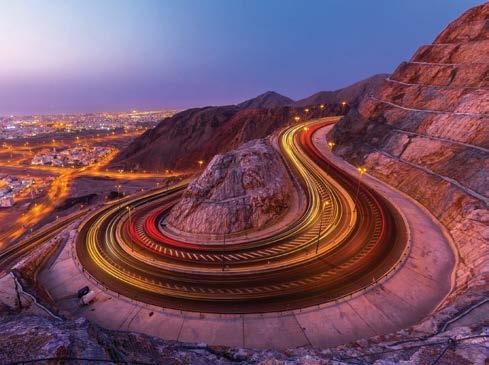
Recently, the Central Bank of Oman raised OMR44 million by allotting Treasury bills. OMR24 million worth of bills with a maturity period of 28 days were allotted at an average accepted price of OMR99.638 for every OMR100, with a minimum accepted price of OMR99.635. The average discount rate and yield for these bills were 4.71458 percent and 4.73170 percent, respectively.
Meanwhile, the remaining OMR20 million worth of bills had a maturity period of 91 days. The average accepted price for every OMR100 was OMR98.746, with a minimum accepted price of OMR89.745. The average discount rate and yield for these bills were 5.02978 percent and 5.09366 percent, respectively.
Oman Air is renewing its narrow-body fleet to revitalize the aviation industry. The airline aims to retire its entire fleet of five Boeing 737-900ERs by Q4 2025, with the first one being phased out next year. The retiring aircraft, which are mainly utilized for short- and medium-haul flights, will be replaced by newer and more advanced Boeing 737 MAXs. The specific aircraft being retired are A4O-BI, A4O-BK, A4O-BT, A4O-BY, and A4O-BZ.
Kuwait reaches for new architectural heights with $1.2B tower
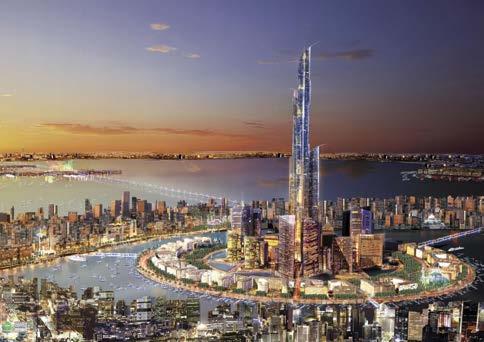
Development expected to attract massive FDI, create numerous jobs
Kuwait has unveiled plans to construct the tallest tower in the world, named Burj Mubarak Al-Kabir, with an estimated cost of $1.2 billion. The towering structure will soar to a height of 1,001 meters and will be located in the Subiya region of Kuwait City as part of a larger development initiative called Madinat Al-Hareer, meaning “City of Silk.”
Tamdeen Group, the real estate company behind the project, anticipates that the development will span 250 square kilometers and will include residential, commercial, and recreational amenities, as well as a vast central park. The Burj Mubarak Al-Kabir Tower, inspired by a traditional Islamic minaret, is set to become a new landmark in Kuwait
Spanish architect Santiago Calatrava will design the tower, and it is estimated to take approximately 25 years to complete. The tower will house a variety of facilities, such as a hotel, offices, apartments, observation decks, and a range of retail and dining options. This development is expected to attract a significant amount of foreign investment and create numerous job opportunities.
Overall, the Burj Mubarak Al-Kabir Tower is anticipated to become a popular tourist destination due to its unique design and impressive features.
The Middle East is home to some of the world’s most iconic skyscrapers, including the Burj Khalifa in Dubai, which stands at a towering height of 828 meters.
Saudi is planning to build a 2-kilometer-tall skyscraper in Riyadh that would become the world’s tallest building when built in 2030.
Oman launches new floating and mobile desalination plants

Facilities to benefit commercial and tourism activities, SMEs boost small and medium-sized enterprises. In March of last year, Nama launched a water delivery service in Wilayat Ibri for Hamra Al-Daroua, costing OMR121,425.
The Oman Water and Wastewater Services Company (Nama) has launched floating and mobile desalination plants in the Musandam Governorate, making them the first of their kind in the Middle East and Oman. These plants have the ability to conduct desalination, transmission, and distribution operations using advanced international technologies in reverse maturation. They will serve 70 marine villages in the governorate, making them a vital addition to the region. The use of floating desalination plants will support local crafts, promote commercial and tourism activities, and
Additionally, Nama inaugurated a water supply project from the Sohar desalination plant to Al Dhahirah Governorate. The project spans 230 kilometers and costs more than OMR150 million. It includes 15 tanks with a total storage capacity of 451,000 cubic meters, located in Sohar, Ibri, and Dhank. Furthermore, Nama has provided desalinated water to Jabal Al-Akhdar, one of the highest mountain peaks with an altitude of up to 3,000 meters above sea level. This project will supply 1.76 million liters of water per day to villages and areas in Jabal Akhdar State.
Saudi Arabia dominates $26.9B MENA debt market in Q1

Quarter witnesses three-fold increase in debt issuances
Data from financial market data provider Refinitiv indicates that the value of MENA Q1 debt issuances nearly tripled during Q1 2023 to $26.9 billion.
Saudi Arabia led the way, accounting for 67 percent of total bond proceeds, followed by the UAE (17 percent), Morocco (9 percent), and Egypt (6 percent).
The MENA region issued both conventional and Islamic debt in the form of bonds, sukuk and Tawarruq, primarily in the energy, real estate and financial sectors.
This rise in debt issuances could be attributed to several factors, including low-interest rates, high liquidity in global markets and increased investor confidence in the region’s economic recovery following the COVID-19 pandemic.
Sukuk or Islamic bond issuances raised $6.3 billion in Q1 2023, marking a 57 percent year-on-year increase and a three-year high.
Financial issuers were responsible for the majority of sukuk issuances, with $4.8 billion, while government and agencies issued $1.5 billion worth, as per the analysis.
The largest MENA sukuk was IsDB Trust Services No. 2 SARL, issued by the financial sector and worth $2 billion. The Egyptian government’s sukuk was the second-largest at $1.5 billion, followed by the UAE’s DIB sukuk of $1 billion.
Citi led MENA bond issuances with $3.5 billion in proceeds and a 13 percent market share in Q1 2023. Emirates NBD PJSC topped the MENA Islamic bonds league table with $863.6.
Dubai medical tourism soars as 674,000 tourists spend AED992M in 2022
Surge reinforces Dubai’s emergence as leading industry hub
In 2022, Dubai witnessed significant growth in medical tourism with 674,000 medical tourists spending AED992 million, indicating a surge of AED262 million from 2021, as per a report issued by the Dubai Health Authority. Of the medical tourists, 39 percent were from Asian countries, 22 percent from Europe and the Commonwealth of Independent States, and 21 percent from Arab and Gulf Cooperation Council countries.

Director General of the Dubai Health Authority, His Excellency Awadh Seghayer Al Ketbi, stated that Dubai’s ability to offer patient-centered medical care of high quality has accelerated its growth as a healthcare destination for the Arab, regional, and international populace. He added that Dubai’s strategic location, safety, outstanding infrastructure, and world-class amenities have contributed to its status as a medical tourism hub.
Dermatology (31 percent), dentistry (24 percent), and gynecology (18 percent) were the three specialties that attracted the highest number of medical tourists. Medical tourists from Asia, Europe, and Africa, including GCC and Arab countries, also visited Dubai for treatment in fields such as orthopedics, plastic surgery, ophthalmology, fertility treatments, hospitalization, and recovery.
Al Ketbi further added that Dubai’s aim to establish a world-class healthcare model with advanced technologies, smart solutions, and skilled professionals has contributed to its global competitiveness in the sector. He also emphasized the significant role played by the healthcare sector in improving people’s quality of life.

As Saudi Arabia prepares to welcome its first guests to The Red Sea and AMAALA destinations, the anticipation is high for the luxurious and unique experiences that await visitors. From scenic islands and vibrant coral reefs to serpentine dunes and sleepy volcanoes, these destinations offer a blend of exotic experiences that are impossible to find anywhere else in the world. With a focus on prestigious hospitality and private settings, visitors and nature often merge to emerge more refined, renewed and reenergized for the betterment of the planet and mankind.
In this interview, Economy Middle East has the pleasure of speaking with John Pagano, the Group Chief Executive Officer of Red Sea Global, a vertically integrated real estate company with regenerative development projects along the Red Sea coast of Saudi Arabia. With over 35 years of international experience in the commercial property sector across Europe, North America and the Caribbean, Pagano is the perfect person to provide insight into the unique blend of luxury and sustainability that defines the Red Sea and AMAALA destinations.
RSG will open its first hotels at The Red Sea this year. What can potential first guests/tourists experience in terms of attractions at The Red Sea with the launch of the hospitality sector there?
An unforgettable experience! Visitors will indulge in unparalleled, sustainable luxury during their stay. They will be able to choose the experiences they want in diverse settings ranging from idyllic islands and vibrant coral reefs to dramatic dunescapes and dormant volcanoes.
We cater to every taste. Guests can enjoy a sumptuous sunset dinner on a private island after a day spent exploring one of the world’s few flourishing coral reefs. The wonders of our local marine ecosystem are easily accessible to divers, with almost 300 reef sites across the destination. These precious habitats are home to more than 280 different species of fish, not to mention the endangered Indian Ocean humpback dolphin and critically endangered Hawksbill sea turtle.
There is also no shortage of places for energetic visitors to explore on land. They can hike and scramble along cliffs, run on trails, go e-biking and gravel biking, and take conservation tours. At night, they can marvel at the stars in our dark skies, set to become one of the largest Dark Sky Reserves in the world.
For guests who are more interested in culture, The Red Sea has plenty for them to enjoy too. They can trace the Incense Trail of ancient traders or meet Saudi artisans and folklorists and learn first-hand about local customs and traditions.
This is just a flavor of what’s on offer. From diving classes and dugong-spotting to spa days and stargazing, The Red Sea has something for everyone.
What can you tell us about the hotels at The Red Sea and AMAALA in terms of planned hotel openings in the next two years: number of rooms, luxury hotel brands, rates, technology, F&B, amenities and the like?
We have partnered with some of the world’s most prestigious hotel brands to bring our vision of luxurious, regenerative tourism to life.
The Red Sea will welcome its first guests this year, with three hotels opening in the coming months: Six Senses Southern Dunes, St. Regis Red Sea Resort and Nujuma – A Ritz-Carlton Reserve. Together, these resorts will comprise 248 keys. Our other hotel brands at The Red Sea are just as prestigious: Grand Hyatt, Edition, Intercontinental, Fairmont, Rosewood, Miraval, Four Seasons, Raffles, Jumeirah, SLS and Faena. When we complete the destination’s first phase in 2024, it will be home to 16 hotels totaling 3,000 keys.
At AMAALA, our integrated wellness haven further north along the coast, we are building eight hotels with upward of 1,200 keys in the first phase of the Triple Bay development. We expect to welcome our first guests at AMAALA in 2024, and our hospitality partnerships there already include Clinique La Prairie, Jayasom and, most recently, Rosewood Hotels & Resorts.
Both destinations will offer outstanding dining and luxury retail options of the kind our discerning guests would expect. Underlying our visitor experience will be smart technologies that ensure the comfort and convenience of our guests while also maintaining our stringent standards for sustainability. Upon arrival at our eco-friendly airport, for example, guests won’t have to touch their bags until they reach their hotel rooms, thanks to our seamless baggage-handling technology.
We expect to welcome our first guests at AMAALA in 2024.
Does your portfolio of projects expand beyond The Red Sea and AMAALA? If yes, what type of projects, funding and milestones can you share on these? What will these destinations contribute to the Saudi GDP in the years to come?
Our recent rebranding to Red Sea Global reflects our ambitions to expand beyond The Red Sea and AMAALA while fulfilling our mandate to set new standards of responsible development worldwide. We want to lead the way in making tourism a force for good. Hopefully, we will inspire others in the international industry to join us on this journey.
We understand that creating memorable travel experiences requires much more than just building a hotel, and our expanded portfolio includes the establishment of subsidiary brands that we believe will enhance the Kingdom’s tourism appeal. In February we introduced our water sports brand WAMA and diving brand Galaxea. Both brands will help us deliver the top-quality experiences that our guests expect. They are also proof of our evolution from a developer that not only creates world-class destinations but operates them too.
In addition to The Red Sea and AMAALA, we have almost a dozen other projects up and down the Red Sea coast that are under a feasibility study, entering the masterplan competition phase, or already under construction. We have proven our ability to deliver developments that are both responsible and visionary, and we look forward to enlarging our role in the Kingdom and eventually expanding beyond it. More details will follow soon on these projects.
We are confident that our destinations will be a catalyst for Saudi Arabia’s tourism industry. We anticipate that The Red Sea and AMAALA together will contribute upwards of 33 billion riyals to the nation’s annual GDP and generate 120,000 jobs, most of which will go to talented Saudi men and women from across the Kingdom.

When it comes to funding and specialized expertise, have you partnered or are you looking to partner with companies to create JV deals? What specific areas of construction are you looking at and what type of companies are you seeking deals with?
We are always open to teaming up with like-minded partners and are optimistic about the interest we have received so far from both within and outside the Kingdom. We select our partners based on shared values: Like us, the brands we have partnered with all seek to do better for people and planet. This mutual commitment is evident in our hotel management agreements with the top-tier brands I mentioned earlier.
Another example of collaboration in our pioneering approach to responsible development is our selection of a consortium led by ACWA Power to deliver The Red Sea’s entire utilities network. Our two main solar parks, taken together, are more than 93 percent complete. Once the consortium finishes installing solar panels and the world’s biggest battery storage facility, The Red Sea will operate exclusively on renewable energy, 24 hours a day, saving some 500,000 tons of carbon emissions annually.
Last year we formed our first joint venture, with Al Mutlaq Real Estate Investment Company to develop Jumeirah The Red Sea, a 159-key luxury resort on The Red Sea’s Shura Island. We’ve also partnered with firms seeking innovative solutions to specific environmental and operational challenges. We’re working with ZeroAvia, for instance, to develop hydrogen-powered seaplanes.
As for funding, we are owned by Saudi Arabia’s Public Investment Fund and are fully funded. Yet, we speak continually to the regional and global investment community about opportunities to support our expanding project portfolio as long-term partners, as in the case of our JV with Al Mutlaq.
To this end, RSG secured the world’s first-ever riyal-denominated Green Finance credit facility. We closed on a facility of SAR14.12 billion ($3.76 billion) with four Saudi banks and with HSBC as the Green Loan Coordinator.
Our partnerships are testament to the unique advantages that investors see in what RSG is doing. We are proud to attract investment that benefits not only our destinations but also the Kingdom more broadly.
Today you are leading the creation of unique eco-luxury, sustainable, regenerative global tourist destinations. How do you ensure that tourists leave the destinations in better shape than when they arrived?
As one of the world’s most responsible developers, we pride ourselves on promoting regenerative tourism. We do this not only in our own operations but by working closely with our partners and guests to ensure that they act on these principles too.
By deciding to visit us, guests will already be expressing a preference for sustainability. The Red Sea will be the world’s largest tourist destination powered solely by renewable energy, 24/7. Both The Red Sea and AMAALA will rely 100 percent on renewables across their first phases, from hotels to airports and mobility networks.
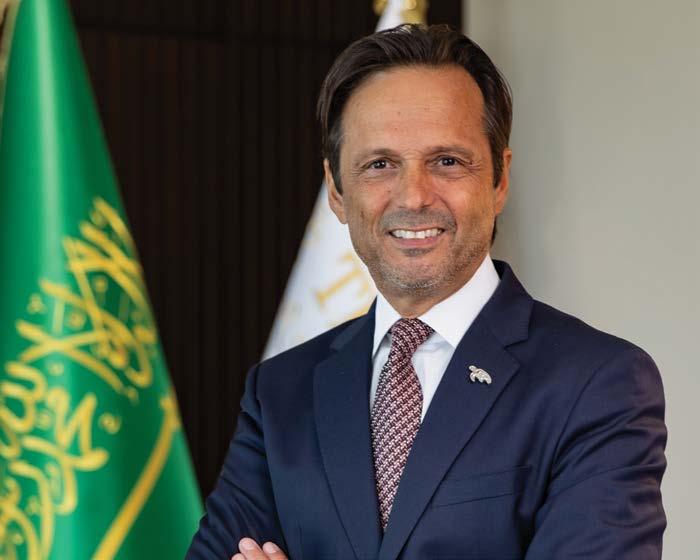
Our guests will appreciate that we have designed our resorts with the lightest possible touch on the local environment, blending our built structures with their natural settings through thoughtful and innovative architecture. Both The Red Sea and AMAALA will also ban single-use plastics and send zero waste to landfill once they are fully operational.
We will offer unique activities that keep sustainability and regeneration at the heart of the guest experience. All our activities will encourage positive, eco-friendly behaviors. Our Galaxea subsidiary, for example, will oversee all diving to protect corals from possible harm. We plan to supply coral-friendly sun-protection creams, and for hikers, we will provide wayfinding programs that guide them to enjoy the local terrain without damaging sensitive habitats. We will announce more of these sustainable guest experiences in the coming months.
We are going even further to protect our precious habitats against potential stress from over-tourism. We calculated the environmental carrying capacity of each destination. As a result, we are capping the annual number of visitors to one million at The Red Sea and 500,000 at AMAALA.
These lucky visitors will be able to experience unparalleled luxury while discovering more about how we’re achieving positive change. For instance, they will have opportunities to learn first-hand about our success in gardening corals, planting mangrove seedlings, and rescuing and rehabilitating injured sea turtles. Likewise, they will be able to engage with the local community, enjoying Saudi Arabia’s famed hospitality and appreciating how tourism can benefit people from a socio-economic standpoint. stainless-steel, over-water villas at Sheybarah Island – they were built in the UAE and shipped to us ready-made for installation. We’ve already placed 17 of the 38 over-water villas planned for this one-of-a-kind resort.
We believe that visitors will come away sharing our sense of responsibility as caretakers of our planet, practicing sustainability in their everyday lives and becoming advocates for regenerative tourism.
What challenges did you face from master planning to financing, construction and built asset management, and how did you overcome them?
We set out to develop unrivalled tourism destinations that combine the heights of luxury with benefits for the environment. As you can probably imagine, this hasn’t been a journey without challenges.
Tourism as an industry is not renowned for sustainability, not least because of its association with air travel, which accounts for around 2.5 percent of global carbon emissions. We decided from the outset to take a different approach to sustainability. Instead of merely maintaining the environment as we found it, we wanted to find ways to actively enhance it. This is what we mean by regenerative tourism, and it marks a radical change for our industry.

We’ve also had to change our approach to contracting due to the tremendous demand for construction in the local Saudi market. We’re now procuring package contractors, working with smaller and medium-sized construction companies. We are also actively seeking to attract new contractors to come and establish themselves in the Kingdom through international roadshows that highlight the huge opportunities in the country. The key is that we want them to come and create new opportunities for Saudis as well as help deliver Vision 2030.
Each of these situations shows how creative thinking has helped us turn challenges into opportunities.
Saudi MCIT and Huawei sign ICT MOU
We brought in scientists before we stuck our first shovel in the ground. We carried out a marine spatial planning simulation for a lagoon at the heart of our project site. We virtually sectioned off 2,081 square kilometers of this lagoon into a grid and assigned a conservation value to each block of this virtual grid. It was the largest assessment of its kind ever undertaken.
Our research team then drew up a list of actions to help ease pressure on the lagoon environment and identified islands with a lower conservation value. Based on their findings, we decided to develop only 22 of our 92 islands, leaving the other three-quarters of them untouched, and set our goal of achieving a 30 percent net conservation benefit by 2040. We later surveyed the wildlife populations and habitats of 200 kilometers of coastline. It took us 11 months; no private developer has ever conducted a bigger environmental survey. These are just two examples of the lengths we’ve gone to. Another challenge for us, as a greenfield developer, is that we have had to install all the infrastructure ourselves, a mammoth task compared to simply building hotels. However, we seized on this as an opportunity; to minimize disruptions to local ecosystems and communities, we’re manufacturing as much as possible off-site. A good example of this is our
Both projects carry huge sustainability themes and targets. Can you summarize those and explain the tie-up with health and wellness, not only for the ecosystem and climate but also personal ones on tourist and resident levels.
Our main sustainability target, which I touched on above, is to deliver a 30 percent net conservation benefit by 2040 across AMAALA and The Red Sea. We will achieve this by enhancing key habitats that are crucial to biodiversity and by applying stringent environmental regulations.
We are already well on track to achieve net carbon neutrality, largely because we will power both destinations solely by renewable energy in their first phases, coupled with a smart and sustainable mobility network powered initially by electricity. We are also gardening corals, using innovative floating nurseries, so that we can enhance our reefs. This matters as coral reefs occupy 0.2 percent of the ocean floor but are home to 25 percent of all marine life.
We aim to plant and restore as many as 50 million mangrove trees across all our destinations. Mangroves shelter a staggering diversity of wildlife, and some mangrove forests can sequester up to 30 times more carbon than tropical rainforests.
To monitor progress toward our 30 percent target, we publish annual sustainability reports that show where we are succeeding and where we need to work harder.
What’s good for the planet is good for people too. Our visitors will find ample opportunities to connect, and re-connect, with nature. AMAALA, our wellness haven, is nestled between mountains and tranquil waters and will be an ideal place for guests to slow down and recharge. AMAALA will deliver an exceptional wellness offering to guests and residents alike, including a Clinique La Prairie Health Resort providing cryotherapy, hyperbaric suites, IV infusions, and next-generation therapies.
Do you see Red Sea Global’s destinations as opening the floodgates for a major influx into Saudi Arabia as a tourism and hospitality destination?
Red Sea Global supports the growth of Saudi Arabia’s tourism industry in line with Vision 2030. We aim to play a key role in the expansion of the industry from the current contribution of 3 percent of GDP to a targeted 10 percent by the end of the decade.
We are helping to put Saudi Arabia on the global tourism map. AMAALA and The Red Sea are hidden gems, and the generosity of the Saudi people makes them all the more attractive. I’ve already mentioned many of the offerings at our destinations, but we also have a geographical advantage: Our location on the Kingdom’s Red Sea coast is within eight-hours’ flying time for 85 percent of the world’s population. Our average annual temperature of 25 degrees makes the trip well worth it for sun-seeking travelers.
Saudi Arabia already attracts a great many visitors. The Kingdom welcomed 93.5 million foreign and domestic tourists last year, and they spent a total of SAR185 billion ($50 billion). Travelers to the Kingdom have traditionally been mostly religious pilgrims, but a growing number of people now visit for other reasons. The introduction of tourist visas in 2019 has made a big difference. The country has opened its doors to the world.
Saudi Arabia is just beginning to unlock its vast potential as a global tourism destination. As more people overseas learn about the Kingdom and all it has to offer, I expect to see visitor numbers rise dramatically. The Red Sea and AMAALA – by setting new standards of excellence for regenerative tourism – will be a powerful engine driving this growth.
Riyadh Air is a new airline that will cater to tourism growth. What else in terms of capacity building, infrastructure development and technological facilities does the kingdom need to meet future tourism demand?
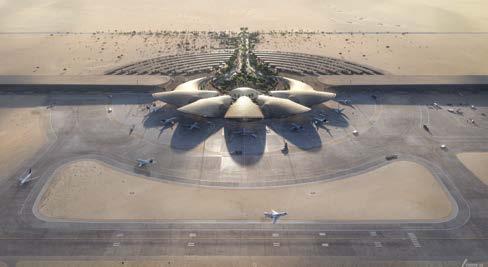
Vision 2030 has been a catalyst for rapid growth in tourism, in terms of visitor numbers and spending as well as work completed or underway to improve the necessary infrastructure. With new destinations opening their doors, such as Diriyah Gate and Al Ula, and more projects close to opening – like our resorts at The Red Sea – the progress is constant. It is an exciting time to be in the Kingdom.
Red Sea Global is doing its part to build capacity for soft skills in the nation’s hospitality industry too. We have launched several programs to train young Saudis, such as our Elite Graduate Program, now in its fourth year. Through the EGP, we hire Saudi university graduates and provide on-the-job training, putting them to work alongside the best and brightest people in their respective fields. We have enrolled 180 EGP Elites so far. We’ve also funded scholarships for 170 students pursuing the University of Prince Mugrin Bachelor’s degree in international hospitality, a program accredited by the prestigious Ecole hôtelière de Lausanne. We run a separate program with the University of Tabuk, teaching hospitality skills to 100 students. And we’re providing vocational training for 700 hospitality, airport and technical services workers.
Can Saudi Arabia reach a point where a wealth of unique and sustainable project portfolios allows it to export its tourism concepts in terms of strategy, planning, building and manpower expertise?
With the projects in our own portfolio, we certainly aim to set new international standards in the development of luxury tourism destinations. Our brand communicates our willingness and aspiration to one day apply these standards on a global stage – and inspire others in our business to join us in putting people and planet first.
For now, we remain focused on doing our best to nurture Saudi Arabia’s nascent tourism industry. We will continue to deliver on our commitments, and we look forward to fulfilling our role as a lynchpin of Vision 2030.
DET: The driving force behind Dubai's tourism success

Sustainability, gastronomy, trade and technology among key growth pillars
With the ultimate vision of making Dubai, the world’s leading commercial centre, investment hub and tourism destination, Dubai’s Department of Economy and Tourism (DET) is mandated to support the Government in positioning the emirate as a major hub for global economy and tourism, and in boosting the city’s economic and tourism competitiveness indicators.
DET is the principal authority for the planning, supervision, development and marketing of the emirate’s economic and tourism sectors. With Dubai being crowned the top global destination for two consecutive years in the Tripadvisor Travellers’ Choice Awards 2023, it aligns with the goals of the newly launched Dubai Economic Agenda, D33 to further consolidate Dubai’s position as one of the top three global cities.
In a recent interview with Economy Middle East, H.E. Issam Kazim, CEO of the Dubai Corporation for Tourism & Commerce Marketing (DCTCM), part of DET, discussed the numerous strategies that have contributed to Dubai’s achievements in this vital sector.
How do you ensure that Dubai stays competitive in the global tourism market, and what are some of the key strategies you have implemented to achieve this?

In 2022, Dubai witnessed a remarkable resurgence in tourism, with the city welcoming 14.36 million international overnight visitors. This figure surpassed both global and regional benchmarks for recovery, as evidenced by data published by the U.N. World Tourism Organisation. The strong growth in international visitors can be attributed to the strategic and creative initiatives implemented under the guidance of His Highness, Sheikh Mohammed bin Rashid Al Maktoum, UAE Vice President and Prime Minister and Ruler of Dubai. These initiatives aim to ensure that Dubai’s tourism sector remains on track to become the world’s most visited and revisited destination.
Dubai’s ability to provide a diverse range of offerings that cater to travellers of varying budgets and preferences has made it a top destination, earning it the top spot in the Tripadvisor Travellers’ Choice Awards for 2022 and 2023. This accolade marks only the second time in history that a city has won this prestigious award for two consecutive years.
As we work toward accelerating momentum across our tourism sector in 2023 and beyond, our strategy to increase the competitiveness and global appeal of the destination will be aligned with the goals of the Dubai Economic Agenda, D33, to further consolidate Dubai’s position as one of the top three global cities.
We will continue to focus on a diversified approach to markets; continuous international outreach to global audiences through celebrity and digital first state-of-the-art campaigns, keeping the city top-ofmind among global travellers and showcasing the city’s multi-faceted tourism offering; highlighting Dubai’s position as an international MICE and events hub, as well as further strengthening cooperation with our stakeholders and partners.
The success of our strategies will be largely built around the pillars of sustainability, gastronomy, trade and technology.
With 2023 declared as the UAE’s “Year of Sustainability,” this is indeed a landmark year for us, particularly as Dubai is preparing to host COP28, the U.N. Climate Change Conference. We will look at successfully balancing sustainability and destination strategies to incorporate sustainable practices into all aspects of the visitor experience while also offering unique and compelling experiences to make Dubai the best city in the world to visit, live in and work.
Our Gastronomy Always on Campaign to position Dubai as a global hub for food tourism will be regularly enhanced, as we continue to drive growth across the hospitality and F&B sector based on the four pillars of diversity, value for money, authenticity and experiential. This builds on the launch of the inaugural edition of Michelin Guide Dubai. A total of 69 restaurants in the city were included in the guide, with two restaurants awarded two Michelin Stars and nine restaurants awarded one Michelin Star, while 14 others received a Bib Gourmand.
Dubai’s investment in infrastructure and support systems for entrepreneurs has made it a preferred destination for start-ups, global talent, and entrepreneurs. The Intelak Hub, Dubai’s aviation and tourismfocused start-up platform, is just one example of our strategic investment in and commitment to revitalizing entrepreneurship in the city. We are dedicated to building a worldclass entrepreneurial ecosystem that encourages growth and innovation. Dubai has also undergone a significant transformation in its legal framework, reflecting our commitment to building a competitive and productive society that is on par with other global economic hubs.
Dubai is committed to always offering something new and unique for the discerning international traveller. These developments will be largely through the Dubai 2040 Urban Master Plan, which includes the expansion of tourism attractions by over 100 percent, enabling new areas for investment, as we increase the diversity of attractions and experiences for residents and visitors. We will also offer alternative pathways to growth facilitated by a series of reforms and regulatory enablers that have eased barriers to entry and paved the way for long-term affiliation with the city through initiatives like the Golden Visa, five-year Multi Entry Visa, and Virtual Working and Retire in Dubai programs. These initiatives have also further enhanced Dubai’s pro- business environment to attract multinationals, family offices, global talent, entrepreneurs, innovators and investors.

We will continue to promote Dubai to the world across all segments including ecotourism, food tourism, wellness tourism, cruise tourism, sports tourism as well as a hub for destination weddings and more. We will look beyond traditional tourism to create alternative routes to attract visitors. Ultimately, our goal is to strengthen our existing and emerging markets, as well as identify new growth opportunities at home and overseas, while creating unique value and always providing the best guest experience.
Can you share with us some of the major challenges and opportunities currently facing the tourism industry in Dubai?
Challenges are nothing new to Dubai and as a city we have tackled them head-on, and even transformed them into opportunities. The pandemic was undoubtedly an unprecedented challenge but thanks to our decisive leadership and their guidance combined with Dubai’s resilience and ability to be agile and adapt to changes, we were able to swiftly and successfully navigate our way out and put the industry back on track. We are now harnessing the benefits of the strategic measures that were taken during tough times, having gained first mover advantage on many fronts. One of the most significant strategies at the time was revitalising the domestic tourism market, creating numerous growth opportunities for the hospitality sector.
We have recognized that the way forward is to open up new avenues for growth beyond traditional tourism, generating more opportunities that could further diversify our offering and reinforce Dubai’s position as the first-choice destination for global travellers. As we look forward to a brighter tomorrow, sustainability is increasingly becoming both an opportunity and a key driver for growth as more and more travellers are seeking out sustainable destinations. Sustainability is embedded at the heart of the city’s development strategy, and with the stepping up of activities under our Dubai Sustainable Tourism initiative, we are ready to cater to global travellers who are driven by the desire to seek authentic local experiences that promote sustainable practices.
DET has recently announced the relaunch of the Carbon Calculator tool that measures the carbon footprint within Dubai’s hospitality sector. What more can you tell us about this?
Since January 2017, the Carbon Calculator has been measuring the carbon footprint of hotels across Dubai in real-time, as a part of our Dubai Sustainable Tourism initiative, which supports the UAE Net Zero 2050 strategy.
The Carbon Calculator helps hotel establishments identify and manage their energy consumption. On a monthly basis, hotels are mandated to submit their consumption of nine carbon emission sources, including: electricity, water, district cooling, liquefied petroleum gas, landfill waste, recycled waste, petrol, diesel and refrigerants. This information is aggregated and analyzed to provide valuable industry insights on the sector’s collective carbon footprint. The data provided helps hotels and resorts implement initiatives to efficiently manage their carbon footprint in line with the 19 Sustainability Requirements these establishments are mandated to abide by, establishing a baseline across hotels in Dubai and unify hotels’ environmental practices. Our pioneering Dubai Can initiative, which promotes the use of reusable bottles and encourages residents and visitors to refill, has successfully reduced the use of an equivalent of more than 7 million 500 ml single-use plastic water bottles within a year since its launch in February 2022.
Sustainable tourism practices are critical to the success of the tourism industry as they aim to minimize any adverse impact on the environment to ensure that the destination remains attractive to visitors. Sustainable tourism practices also promote social responsibility, ensuring that tourism benefits local communities and respects their culture and way of life, as well as encouraging more people to visit and re-visit the destination.
How does DET collaborate with other government entities and private sector partners to promote tourism in Dubai?
The extraordinary success that Dubai’s tourism sector continues to enjoy is a testament to the unique spirit of collaboration between the government and private sectors that permeates throughout our industry, allowing us to create a unified approach to showcasing Dubai as a must-visit destination.
This harmonious alignment between our Department, stakeholders and partners has enabled us to leverage our collective strengths, resources, and expertise to work toward a common goal of creating an exceptional tourism experience for all. This has ensured that all are aligned with Dubai’s global campaigns and initiatives and are well placed and prepared to promote the city effectively in international markets. The future of tourism lies in our ability to adapt to evolving market trends and changing consumer preferences. That is why we are committed to continuously liaising with our stakeholders and over 3,000 global partners to keep pace with new developments and provide regular destination updates to ensure Dubai remains top-of-mind among global travellers.
How important is digital marketing and technology in the tourism industry, and what role does DET play in leveraging these tools to promote Dubai as a destination?
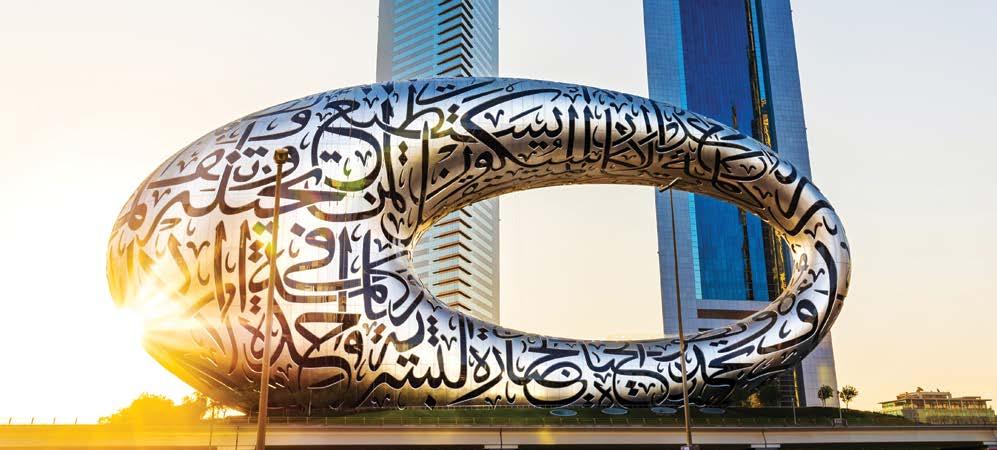
Inspired by the vision of His Highness
Sheikh Mohammed bin Rashid Al Maktoum to position Dubai as a global city at the forefront of innovation and technology, we have constantly rolled out initiatives to promote the destination across digital platforms. Intelak Hub is a testament to our focus on technology and innovation to create a transformative experience across the tourism ecosystem. It was established as part of an integrated strategy to position Dubai as the most sought-after destination for innovators, talents, entrepreneurs and investors. Guided by its founders – the Emirates Group, Dubai’s Department of Economy and Tourism, Accenture and Microsoft – Intelak Hub is committed to supporting a cohort of innovative start-ups with mentorship and opportunities to enable them to grow and scale their business.
Dubai has a world-class physical and digital infrastructure, offering entrepreneurs and SMEs a platform for ease of set up and scale, as well as allowing companies in the travel, tourism and hospitality sectors to provide state-of-the-art systems and services across tourism touchpoints in the city.
Digital marketing has become increasingly important in the travel cycle as consumers rely heavily on online research and booking platforms. Recognizing this strategic shift, Dubai has placed significant emphasis on its mobile first, digital first agenda, customizing our visitor experience for travellers from each source market based on the audience mix and segment preferences. One of the strategies employed by Dubai is the use of innovative global campaigns like Dubai Presents to highlight the city’s multifaceted appeal. The Dubai Presents campaign comprises a series of short video films featuring Hollywood stars and set against some of Dubai’s most iconic landmarks and hidden locations.
Dubai has pioneered innovative, data-driven digital marketing communications and accelerated the use of these platforms and remote campaigns during the pandemic to position itself as a safe destination for global travellers and sustain its international appeal, presenting the city as the perfect holiday getaway for tourists when it is safe for them to travel. Dubai has also partnered with global technology and internet leaders and digital platforms like Microsoft, Google and Snapchat to raise destination awareness in a creative way.
To further raise awareness of the destination, Dubai embraces data, analytics, and disruptive innovation to stay abreast of consumers’ rapidly evolving needs. The city utilizes a range of social media channels, including Facebook, Instagram, YouTube and Twitter, to reach its target audiences. At the core of its internet strategy is the region’s most advanced destination website, Visit Dubai, a content-rich ecosystem that showcases the city’s offerings and serves as a valuable resource for visitors.
Hilton: Focus on growth, workplace culture and ESG strategy
Hospitality giant unlocks region’s potential as it doubles in size and multiplies experiences
Hilton, a leading hospitality giant, has established itself as a brand that caters to the needs of guests from all walks of life, for any length of stay or occasion, across the globe.
In 2022, with travel bouncing back from the pandemic, Hilton’s 400,000 strong team welcomed almost 200 million guests to their hotels globally. This impressive growth has led to the company’s expansion plans, with Hilton set to double its size in the region.
Recently, Jochem-Jan Sleiffer, the President of Middle East, Africa & Türkiye at Hilton, shared his insights on this expansion with Economy Middle East in the following interview.


After assuming your current position in January 2020, what agenda did you set for your portfolio at Hilton in the Middle East, Africa & Turkiye?
I assumed the leadership role for MEA&T with a clear goal to unlock the immense potential of the region. It gives me great pride to have guided our team through a period of significant challenges and achievements. As travel resumes in the Middle East, Hilton is poised to contribute to a new era of flourishing tourism in the region, with our proven strategy centered on workplace culture, growth, and ESG.
Our achievements include consistently ranking among the top workplaces in the region, as recognized by Great Place to Work. This achievement is a testament to our team members’ loyalty and dedication to Hilton, which is rooted in our culture of promoting diversity, inclusion, and well-being.
In spite of the challenges posed by the pandemic, we successfully launched several marquee properties in 2020. These included the re-entry of Hilton into the UAE capital through Conrad Abu Dhabi Etihad Towers and the debut of our LXR brand in Türkiye with Susona Bodrum, LXR Hotels & Resorts. Additionally, in 2021, we proudly introduced The WB™ Abu Dhabi, Curio Collection by Hilton, the world’s first Warner Bros. hotel.
Our growth continues as we plan to double our presence across the region. ESG also continues to be at the center of our regional strategy, with a focus on creating positive environmental and social impact across our operations, supply chain, and communities.
What key challenges and advantages does your current region present compared to Europe when it comes to tourism and business travel?
The Middle East’s strategic location between Europe, Asia, and Africa makes it an ideal hub for international travel. Additionally, the region boasts a vibrant cultural heritage, iconic landmarks, and a wide range of attractions that appeal to both leisure and business travelers. In 2022, the UNWTO reported that over 900 million tourists travelled internationally, and it’s encouraging to see that both the Middle East and Europe had a strong performance. The Middle East had the highest relative increase, with arrivals reaching 83 percent of pre-pandemic numbers, while Europe reached almost 80 percent of pre-pandemic levels.
Is Hilton set to double its portfolio in the region?
Hilton plans to more than double its presence in the Middle East over the next three to five years, with a pipeline of over 90 hotels and 23,000 rooms. In 2022, the company made significant progress toward this goal with several noteworthy openings. In the GCC, Hilton opened the Waldorf Astoria in Kuwait and Qatar, while the flagship Hilton Hotels & Resorts brand continued to expand across the region, including the Hilton Dubai Palm Jumeirah in the UAE. Additionally, Qatar saw the opening of Maysan Doha and Katara Hills Doha – both under the LXR Hotels & Resorts brand – as well as Embassy Suites by Hilton Doha Old Town and Fuwairit Kite Beach, Tapestry Collection by Hilton.
What do you estimate demand for luxury hospitality to be and from where?
As travel demand continues to rise, the luxury hotel sector is expected to maintain its strength. The GCC countries, namely the UAE, Saudi Arabia, Kuwait, Qatar, Bahrain and Oman, are major players in the Middle East’s luxury hospitality market.
What talent recruitment strategy will you engage in to overcome potential staff shortages, at least in leadership hospitality positions?
As a people-focused business, we believe that when our Team Members are at their best personally and professionally, they can better care for our guests and one another. From life-changing travel opportunities and career acceleration programs to wellbeing platforms such as Thrive@Hilton, we work hard to make Hilton a positive and empowering workplace. Hilton also offers a compelling travel discount program, Go Hilton, for Team Members, their families and friends, as well as ongoing training and apprenticeship programs, to help all Team Members achieve their career aspirations.
Can you share details about Hilton’s technology platforms in the region, including booking and poolside services? Also, could you discuss Hilton’s future technology investments and focus areas?
In recent years, building on our legacy of innovation, we have introduced several technology advancements that improve the guest experience. Our Digital Key Share, which is a first for a major hospitality company, enables multiple guests to securely access their room’s Digital Key via the Hilton Honors app on their smartphones. Additionally, we now offer automatic room upgrades for Gold and Diamond Members 72 hours before arrival, and we have launched Confirmed Connecting Rooms, an industry-leading booking experience that allows guests to easily book and confirm at least two connecting rooms.
What is the industry outlook in the region? What threats does it face?
The region’s recovery after the pandemic has been remarkable, thanks to excellent leadership from the authorities. The UAE and Middle East were the first in the world to host major events again, including FIFA World Cup Qatar 2022, Expo Dubai 2020, and world-renowned sports and music events in KSA. This year, we are eagerly anticipating COP 28 being held in the UAE.
According to the UNWTO, the Middle East is on track to recover fully this year, with international tourist arrivals reaching pre-pandemic levels. The region is experiencing a new era of travel, boosted by global recognition such as Dubai’s selection as the world’s most popular destination in the 2022 Tripadvisor Travellers’ Choice Awards.
Check into a world of personalization, empathy and adventure
Authentic humancentric service at the core of Four Seasons philosophy
The Four Seasons is renowned for providing an exceptional experience to guests, no matter the weather. With its commitment to selflessness and timeless elegance, the hotel offers personalized and unique services that surpass expectations. However, there’s much more to this hospitality giant.
Simon
Casson, President of Hotel Operations for Europe, Middle East, and Africa at The Four Seasons, has granted Economy Middle East exclusive access to gain insight into the inner workings of this industry titan.
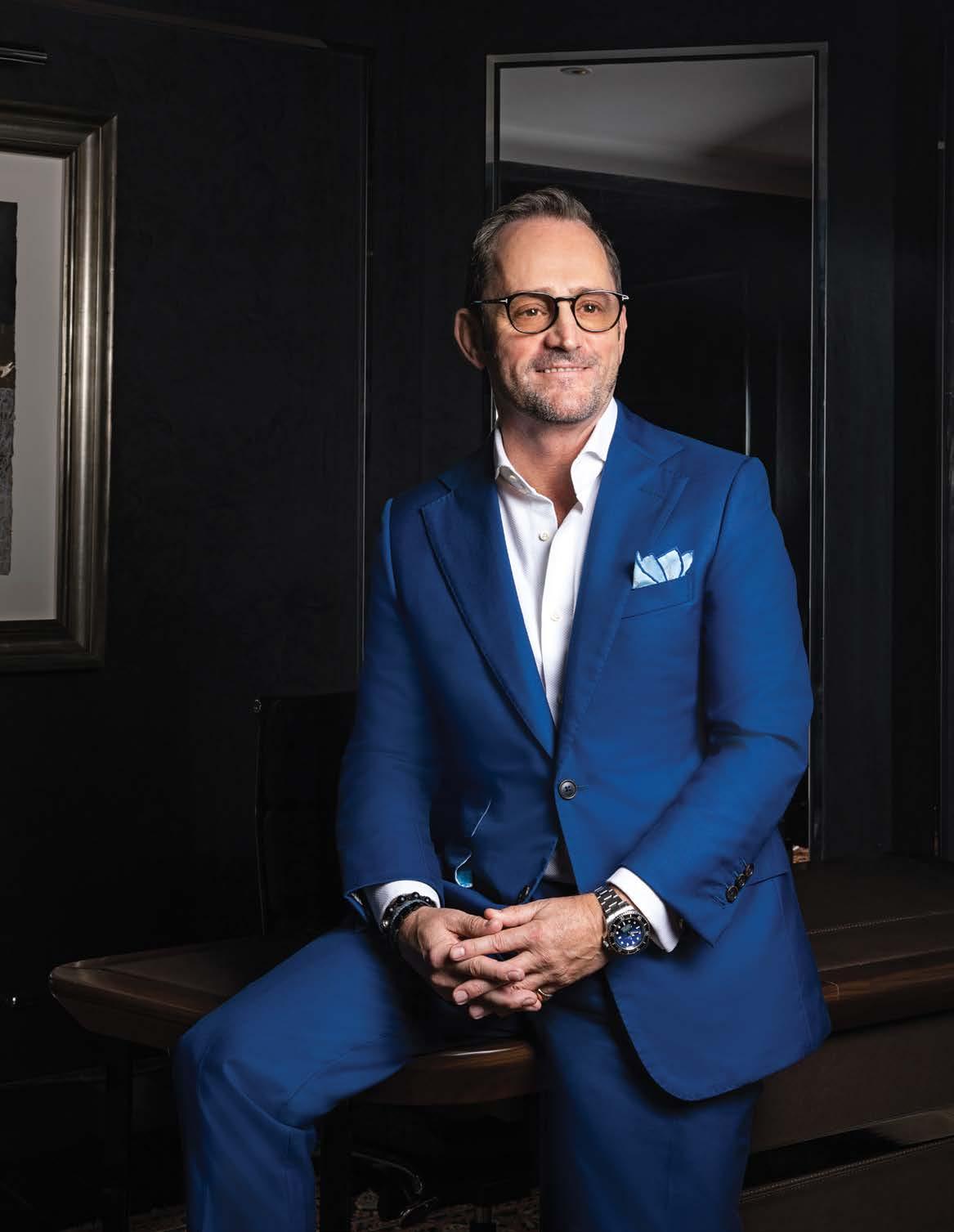
How does Four Seasons ensure it provides exceptional experiences and services that cater to the unique needs of each guest?
At Four Seasons, we strive to create personalized experiences that cater to each customer’s unique needs. We accomplish this by empowering our team to act on the spot, provide spontaneous care, and anticipate needs before they’re expressed. Our culture is based on “The Golden Rule” – treating others as we’d like to be treated. This value is ingrained in every touchpoint and interaction, both in the EMEA region and globally.
While we continuously innovate and adapt to changing preferences, the essence of our brand – human-centric service – remains the cornerstone of the exceptional experiences Four Seasons is known for. To me, authentic service is the epitome of luxury.
What are some emerging, exciting trends in the hospitality industry?
Our guests’ expectations have shifted from merely visiting new places to connecting with the world on a more profound level. This desire for authentic experiences is especially evident among Millennial and Gen Z travelers, who are drawn to brands that align with their values. Today’s guests prioritize experiences over materialism and value flexible, personalized service as the hallmark of true luxury. The empathy we infuse into our service creates a sense of belonging that resonates deeply with our guests. This personalized care was reflected in the launch of our new creative brand campaign last year, as we continue to innovate and provide unique ways for guests to engage with the world. From bespoke adventures on our popular Four Seasons Private Jet itineraries to the upcoming launch of our Four Seasons Yachts, we constantly strive to elevate the guest experience through innovative approaches to hospitality. Expectations are evolving rapidly, particularly among techsavvy younger guests for whom time is a precious commodity. While technology enhances the guest experience, we remain committed to providing our guests with warm, personable interactions. That’s why we developed the ‘Chat’ function on our Four Seasons Application – a 100 percent peoplepowered feature designed to complement rather than replace human interactions.
What initiatives has Four Seasons implemented to reduce its environmental impact?
At Four Seasons, our unwavering commitment to supporting our communities and environment is evident through our comprehensive ESG program. Our program revolves around two main pillars, namely “Planet” and “People,” and is aligned with the United Nations’ SDGs to ensure clear objectives. We constantly evaluate and mitigate climate risks by implementing measures such as using renewable or carbonfree energy sources.
We’ve implemented energy-saving controls for guest rooms and building systems, launched water conservation measures and recycling programs, and installed Electric Vehicle charging stations and plant-based menus at our Hotels and Resorts worldwide. In destinations that prioritize nature, Four Seasons has taken measures to preserve biodiversity and enhance local ecosystems. Our goal is to integrate sustainability into every aspect of our operations and inspire others to make a positive impact.
Four Seasons recently announced a resort that will open in Saudi Arabia’s Red Sea project. Can you tell us more about it?
Our newest property at The Red Sea development will be one of the initial resorts in Saudi Arabia’s impressive giga-project, seamlessly integrating beachside travel with the Kingdom’s natural and cultural wonders. The Four Seasons Resort will be situated on Shura Island, featuring a yacht marina, lifestyle and leisure facilities, retail outlets and an 18-hole golf course. The resort will include 149 rooms and suites, each providing unobstructed vistas of the picturesque beaches and crystalclear waters surrounding the island. With six restaurant and lounge outlets, families can enjoy the dedicated Kids for All Seasons area while indulging in a wide range of dining options. Additionally, the resort will offer a deluxe spa, three outdoor pools, and two separate beach areas to cater to every guest’s preferences.
Our Red Sea resort will join Four Seasons’ growing collection of properties in the Kingdom, including Four Seasons Hotel Riyadh at Kingdom Centre, along with upcoming projects in Diriyah and Jeddah at the Corniche.
What advice do you have for aspiring hospitality professionals who are just starting out in the industry?
My advice would be to have a clear understanding of yourself and where your passions truly lie. Early in my career, I came to realize that the people who rose quickly within Four Seasons were not only the most talented in their fields, but also the best at developing their sense of self. Ask yourself what you’re interested in and what motivates you. These are crucial questions to consider.
Once you have established a solid foundation and believe the industry is for you, you then need to be fully committed to working hard with a company aligned with your personal values and in an environment where you can develop and flourish. Ever since my journey began with the company in 1989, the Four Seasons culture has been a constant source of inspiration for me.
What is your vision for the future of the hospitality industry in the EMEA region?
Travel & Tourism is playing a central role in the transformation of several Middle Eastern countries. While technology is undoubtedly a significant factor driving unprecedented levels of personalization through data and insights, at Four Seasons, we firmly believe that our future will continue to be shaped by human connections and imagination.
IHG Hotels and Resorts' growth trajectory, sustainability journey
Executive highlights strategies to revive hospitality, tourism markets
IHG Hotels and Resorts is rapidly expanding with recent deals such as Holiday Inns in Riyadh’s Olaya District and Khobar, and Intercontinental Resort Red Sea in Saudi Arabia. These ventures are a testament to the company’s growth trajectory, fueled by favorable market conditions.
In this interview with Haitham Mattar, Managing Director, IMEA, IHG Hotels & Resorts, Economy Middle East delves into the core strategies employed by the company to revitalize the hospitality and tourism markets, as well as explore technology and sustainability trends shaping the industry.
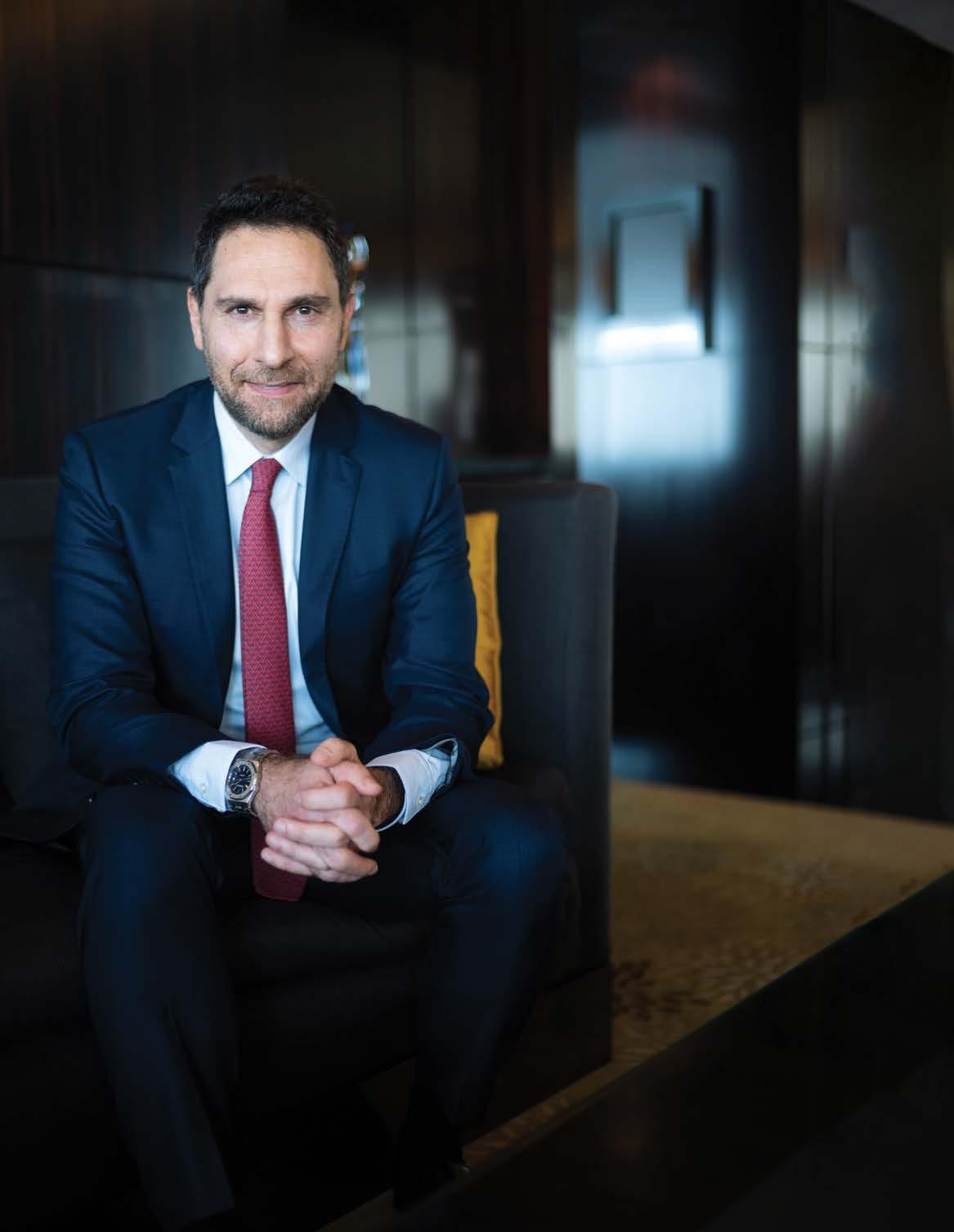
What is your perspective on the current state of the hospitality industry globally, and in the Middle East specifically?
Over the past year, our hotels worldwide, including those in the Middle East, experienced a substantial increase in business due to a consistent rise in occupancy rates. This year, we are observing a similar trend, as travel continues to be a top priority for many individuals.
Several countries in the region, including Saudi Arabia, the United Arab Emirates, and Egypt, are presently undergoing significant changes to diversify their economies and enhance their tourism offerings for a diverse range of global audiences. In response to this increasing demand, we are committed to accelerating our growth and expanding our presence in the region.
What steps have you taken to incorporate sustainability practices into your operations?
We embrace the responsibility and opportunity to create a constructive impact and contribute to shaping the future of responsible tourism. In 2021, we introduced a 10-year action plan named “Journey to Tomorrow,” aimed at generating a positive impact on our employees, communities, and the environment.
During the upcoming decade, we will prioritize reducing carbon emissions and energy consumption, eradicating single-use products, or seeking recyclable alternatives, minimizing food waste, and collaborating with regional stakeholders to address water sustainability challenges.
How does the hospitality industry respond to changes in consumer spending patterns during times of economic uncertainty?
We will always face macroeconomic challenges that require navigation. However, despite significant sector disruptions, we have returned to pre-pandemic levels of performance in many markets and forecast increasing demand in the years to come.
To address recent challenges, we have utilized trends such as staycations and weekend leisure travel demand by implementing targeted campaigns and promotions across multiple categories. Furthermore, IHG offers various brands across different segments with price points catering to different guest profiles; from those seeking luxurious experiences to others looking for smart, efficient stays.
In addition to implementing hygiene and safety protocols, we have also developed hotel recovery toolkits and targeted marketing campaigns. We maintain regular communication with our GMs and owners, provide financial and operational guidance, and offer a range of measures to help reduce costs and preserve cash.
What role does government policy and regulation play in shaping the performance of the hospitality industry?
In the Middle East, we collaborate with governments, trade bodies, and peers to safeguard the interests of its people, hotels, owners and the industry as a whole.
IHG’s CEO, Keith Barr, is a member of the Executive Committee of the World Travel & Tourism Council and, together with other senior leaders at IHG, regularly participates in prominent conferences to encourage the travel industry and governments to collaborate for the common good. In November 2022, Keith attended the WTTC’s Global Summit in Riyadh, along with government ministers and a select group of industry leaders to discuss the importance of cooperation between the public and private sectors, and investment in sustainability, talent, and connectivity between destinations.
Following the launch of Journey to Tomorrow in 2021 and our White Paper on transitioning hotels to net-zero carbon, we shared our findings with peers to promote industry-wide decarbonization. Additionally, we are currently engaged in discussions with governments across EMEAA.
Is Egypt an important market for IHG as you expand?
The Egyptian government’s global marketing drive is expected to further increase tourist flow in the next few years and support occupancy rates.
Egypt is a year-round destination that attracts a diverse mix of leisure and corporate travelers. New projects in the gas, petroleum, transportation, and telecommunications sectors are also boosting the inflow of business travelers. In addition, government investments, including the new national museum and the opening of new international airports, are expected to drive continued growth in the country. Megaprojects such as the New Administrative Capital, resorts development on the North Coast, and mixed-use master plans contribute to the country’s business and tourism offerings.
We recently opened our first Crowne Plaza hotel in Egypt and announced the debut of our lifestyle brand, Hotel Indigo, across several cities. We also signed agreements for other brands, including InterContinental, voco and Holiday Inn.
Have your investments in technology generated better returns in terms of bookings and client loyalty?
In today’s world of seamless experiences, our digital capabilities are essential for our guests and owners. IHG Concerto, our cloud-based platform, is critical to the work we’re doing in this space, serving as the foundation for much of how we’re creating digital advantages. It allows us to integrate core hotel applications into one powerful platform, delivering enhanced guest, owner, and colleague experiences. With regular releases of new functionality, Concerto enables us to scale and innovate quickly. Guests can seamlessly select add-ons and tailor their stays, and pricing adjusts based on selected attributes. Customers will be able to see whether a room has additional square footage or an excellent view when they book and choose the best option to suit their needs. We have also developed a next-generation mobile app to provide a superior guest experience.
What specific qualifications and experience do you bring with you?
I have more than 25 years of experience and have had the opportunity to work across hospitality, destination marketing, and the public sector in the Middle East. The tourism sector and hospitality industries are intertwined and are dependent on each other. Both require a strong focus on customer service and an ability to deliver high-quality experiences that meet and exceed guest expectations. I’ve seen how a strong hotel sector can create memorable travel experiences for guests and elevate the profile of a destination.
Short and long-term solutions needed to combat MENA's food insecurity challenges
Government policies crucial in mitigating food price inflation

The MENA region is facing a deepening crisis due to rising food prices, according to a recent report by the World Bank. Economic growth in the region is expected to slow in 2023, particularly in the Gulf Cooperation Council (GCC) countries, as the oil price unwinds. In addition, the challenges of food insecurity in the region are enormous, with almost one in five people in developing economies expected to be food insecure in 2023.
In an interview with Roberta Gatti, Chief Economist Middle East and North Africa at The World Bank, Economy Middle East explores possible short- and long-term solutions for these crises.
How can the deepening crisis caused by slower economic growth and rising food prices in the MENA region be resolved, especially in light of your latest report’s predictions?
There are human and economic costs to rising food prices which may leave socioeconomic scars for generations in the developing MENA economies. Rising food prices may increase food insecurity which, even if temporary, can disrupt the destinies of children, setting them on paths to limited prosperity as adults. About 8 million children in developing MENA economies are forecasted to be food insecure in 2023. In addition, we estimate that food price inflation from March through June 2022 alone raised the number of children at risk of stunting at birth by about 200,000285,000. There are ways to address these challenges including cash and in-kind transfers that can be enacted immediately to stem acute situations of food insecurity, although these measures require fiscal resources. Better care for mothers, building resilient food systems, and improved data could help in the medium term.
You expect growth in the GCC to slow to 3.2 percent in 2023 from 7.3 percent in 2022. What factors did you rely on in lowering your expectations?
Growth in 2022 was boosted by the oil windfall in GCC economies, which collectively grew 7.3 percent that year. In 2023, however, as the oil price unwinds, GCC economies are expected to experience the sharpest deceleration among MENA countries with projected growth at 3.2 percent. Our forecasts assume that the price of oil in 2023 will average $85 per barrel, whereas it averaged $100 per barrel in 2022. The deceleration of growth is expected to be particularly stark in the case of Saudi Arabia, where growth is expected to go from 8.7 percent in 2022 to 2.9 percent in 2023. The UAE and Kuwait are also expected to slow down from 6.6 percent in 2022 to 3.6 percent in 2023 and from 7.9 percent in 2022 to 2.7 percent in 2023 respectively.
What short- and long-term measures are necessary to address the enormous challenges of food insecurity? Are you optimistic?
In the short-term, better targeted cash and in-kind transfers can be enacted immediately to stem acute situations of food insecurity. Improved targeting is necessary to focus on the most vulnerable families while saving fiscal resources by reducing untargeted subsidies. Challenges in the MENA region include the reliance on untargeted food subsidies, as well as cash transfers that are not well targeted and cover a small share of the poor. In the longer term, building resilient food systems, better care for mothers and improved data could help.
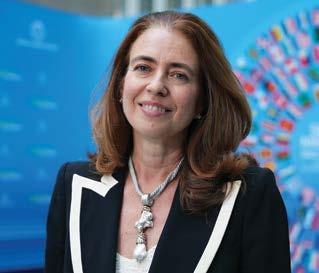
taken. As previously mentioned, targeted cash and in-kind transfers can address acute food insecurity. Additionally, better maternal care, resilient food systems, and improved data collection can contribute to long-term solutions.
How did you arrive at the conclusion that nearly 20 percent of people in developing MENA economies will experience food insecurity in 2023, and how do these numbers vary among countries of the region?
The food insecurity estimates are based on the FAO Food Insecurity Experience Scale data, which is supplemented with the latest machine learning techniques. This methodology is described in the annex of our report. On average, food insecurity in developing MENA economies has worsened from 11.8 percent in 2006 to 17.6 percent in 2023, primarily due to Syria and Yemen. Although GCC economies and upper middle-income MENA economies have lower food insecurity rates, they still perform worse than other high and upper middle-income economies worldwide. For 2023, severe food insecurity prevalence rates in GCC economies range from 0.9 percent in the UAE to 8.2 percent in Oman, while the average for high-income countries is 1.4 percent. We estimate that nearly 8 million children in developing MENA economies may experience food insecurity in 2023.
According to your estimates, food price inflation in the MENA region was 29 percent on a year-on-year basis from March to December 2022, surpassing the estimated headline inflation of 19.4 percent during that same period. How can government policies help mitigate the impact of food price inflation and help communities?
High levels of inflation, particularly food inflation, can be devastating, especially for the poor and vulnerable. It is crucial to prioritize support for those most affected by food insecurity resulting from high food prices. This is not only a humanitarian imperative, but also essential to mitigate the long-term economic consequences of malnourishment and malnutrition in children. To mitigate the impact of inflation, there are measures that can be
How is the World Bank addressing the impact of the ongoing Ukraine war on supply chains and food accessibility? Are they exploring measures to mitigate the inflation of prices for goods and proposing alternative supply routes, especially as the Russia/Ukraine crisis drags on or even intensifies?
Food inflation was a problem in 2022 for all countries, regardless of the trading routes. This led us to focus the report not on what alternate supply routes can be employed to alleviate food inflation, but rather on the effects of food inflation and what can be done to support the families suffering the consequences of elevated food prices. In the report, we highlight policy options to address the challenge of food insecurity in the short and long terms.










